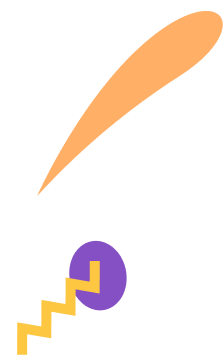

Here are 26 maths questions to support your Year 9 learners!

Author
Mhairi
Published
April 2025


Key takeaways
Table of contents
Here we are – it’s the final year of the KS3 maths curriculum! Year 9 can be the last chance for learners to solidify the foundational knowledge they need to carry them through their GCSEs in the coming years.
With that in mind, students must keep up with revision and practice their maths skills to make the learning from this year stick!
When it comes to homework or revision help, the maths questions Year 9 students are faced with can seem pretty complicated! It’s not unusual for adults to feel a little out of their depth in trying to make sense of them!
Thankfully we’ve created a list of Year 9 maths questions with answers that your learners can use for revision. Use this bank of questions as a revision test at the end of the year, or take the questions a section at a time as an end-of-unit knowledge check!
Our list of 26 maths questions for Year 9 learners covers aspects from across the Year 9 maths curriculum. How many do they think they can get right? Let’s get started!
1. Write 4.56108 as an ordinary number.
Answer: 456,000,000
2. Write 0.00056 in standard form.
Answer: 5.6 x 10-⁴
3. What is the order of operations?
Answer: BODMAS or BIDMAS
Brackets, Order/Indices, Division, Multiplication, Addition, Subtraction
4. Calculate the value of the expression: -8+5(-3)-4
Answer:
-8 +5(-3)-4
= -8-15-4
= – 27
5. Convert the decimal 0.375 to a fraction and simplify your answer.
Answer: 0.375 =³⁷⁵⁄₁₀₀₀ = ⅜
6. Simplify the expression: 4a + 5b – 2a + 3b
Answer: 2a + 8b
7. Expand and simplify: 2(x+3)-4(x-2)
Answer:
=2x + 6 – 4x + 8
= -2x + 14
8. Factorise the quadratic expression: x² + 5x + 6
Answer:
(x+2)(x+3)
9. Solve for x: 3x – 7 = 11
Answer:
3x = 11 + 7
³ˣ⁄₃ = ¹⁸⁄₃
x = 6
10. Solve the inequality: 5-2x>1
Answer:
-2 x >1 – 5
⁻²ˣ⁄₋₂ > ⁻⁴⁄₋₂
x < 2
Unlock unlimited maths questions
Put your skills to the test with fun exercises + maths games that are proven to boost ability!
Try DoodleMaths for free!
Select a year group
11. A rectangle has a width of 6 cm and a length of 8 cm. If both dimensions are scaled up by a factor of 3, what are the new dimensions?
Answer:
Width = 6cm x 3 = 18cm
Length = 8cm x 3 = 24cm
12. A car travels 240 miles on 10 gallons of fuel. How many gallons of fuel are needed to travel 600 miles, assuming the same fuel efficiency?
Answer:
Step 1: ²⁴⁰⁄₁₀ = 24mpg
Step 2: ⁶⁰⁰ ᵐⁱˡᵉˢ⁄₂₄ₘpg = 25 gallons
13. Divide 700 in the ratio 5 : 3 : 2
Answer: 350 : 210 : 140
14. Identify the ratio which is the odd one out.
A. 24:32 B.15:20 C. 6:9 D. 12:16
Answer: C. All other ratios can be simplified to 3:4.
15. The number of people who voted for Sam in the school election was 350.
The number of people who voted for Meghna was 1050.
Write the ratio of people who voted for Sam to people who voted for Meghna in its simplest form.
Answer: 1:3
16. A and B are vertices of a regular polygon.
Use the information provided to determine how many sides the polygon has.
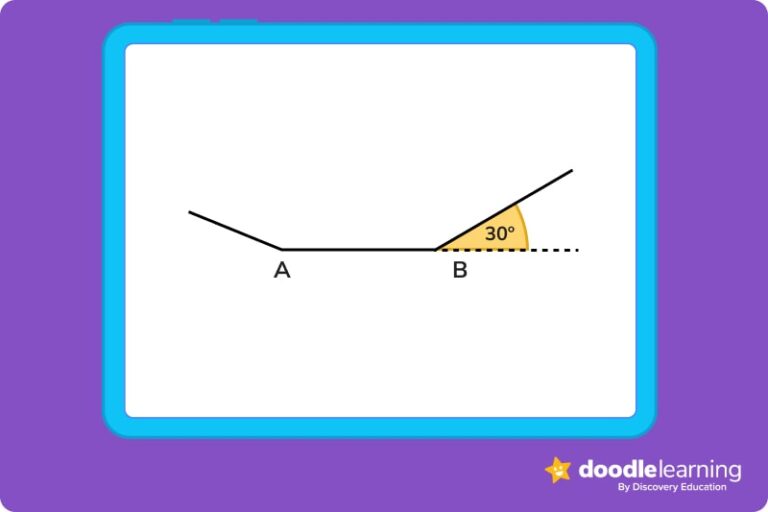
Answer: 12 sides
17. Calculate the length of x in this triangle.
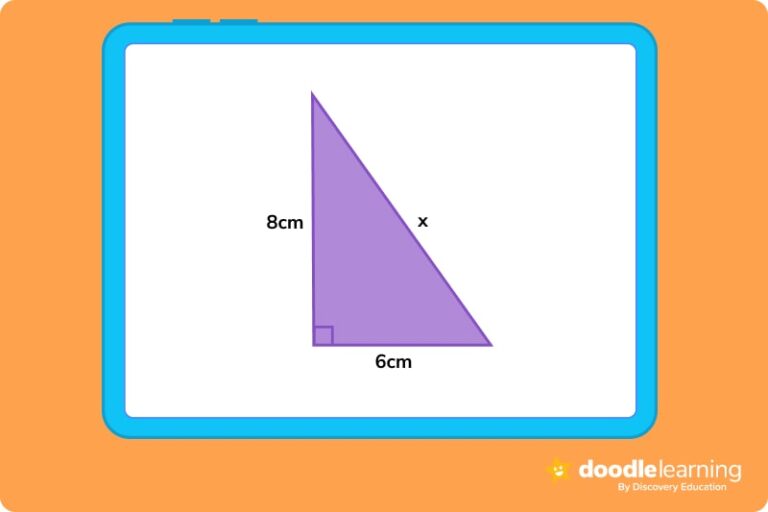
Answer: Use Pythagoras’ Theorem
a² + b² = c²
8² + 6² = x²
64 + 36 = x²
√100 = √x²
x = 10cm
18. Use the information given in the diagram below to calculate the size of angle A.
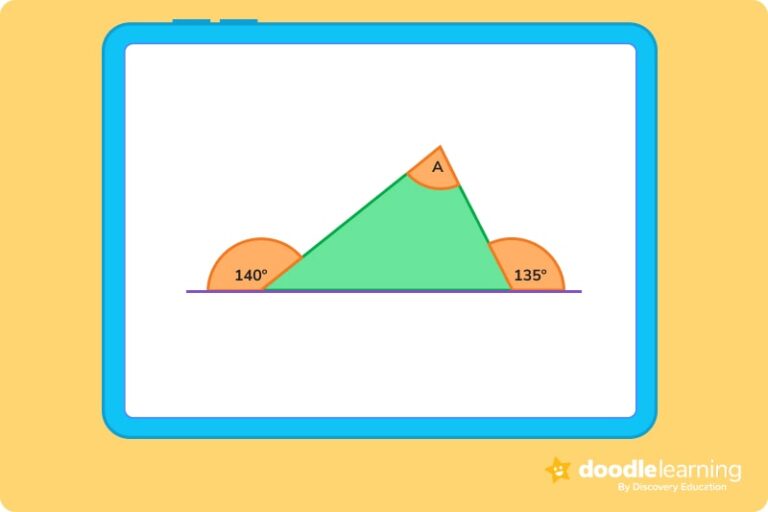
Answer: 95°
19. ABC is a right triangle. Angle ACB is equal to 62°. The lengths of the sides AE, EF and FG are all equal.
Calculate the size of the angle FGB.
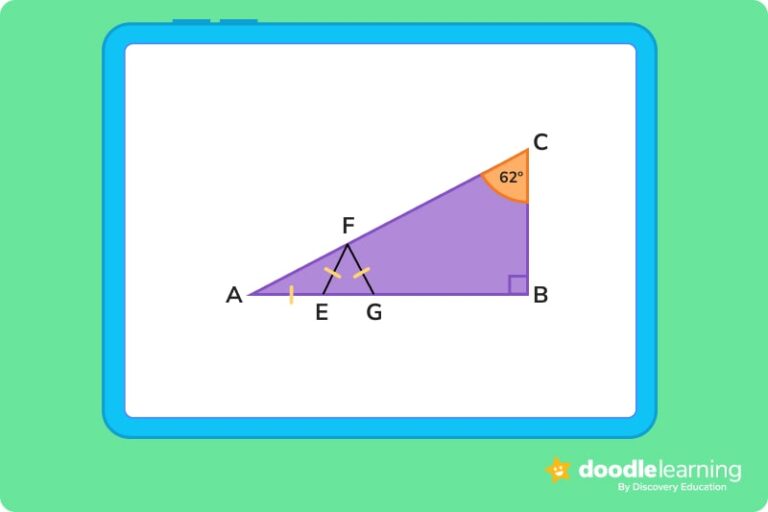
Answer: 124°
20. Calculate the perimeter of this shape. Round your answer to two decimal places.
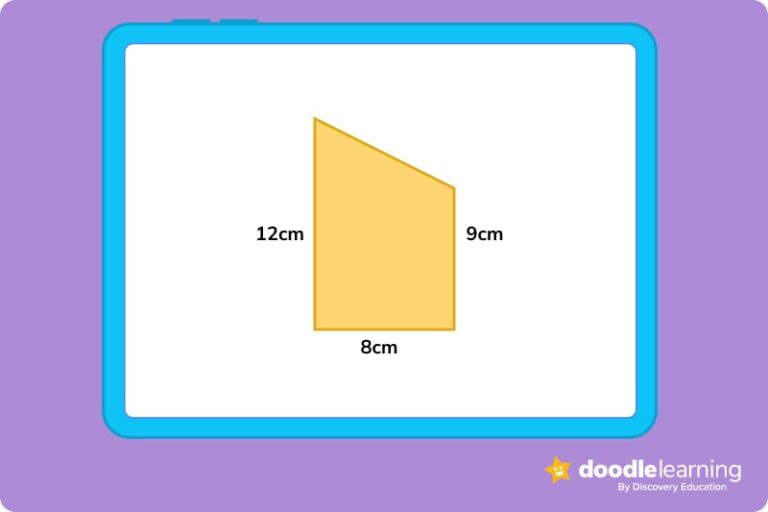
Answer: (see solution below)
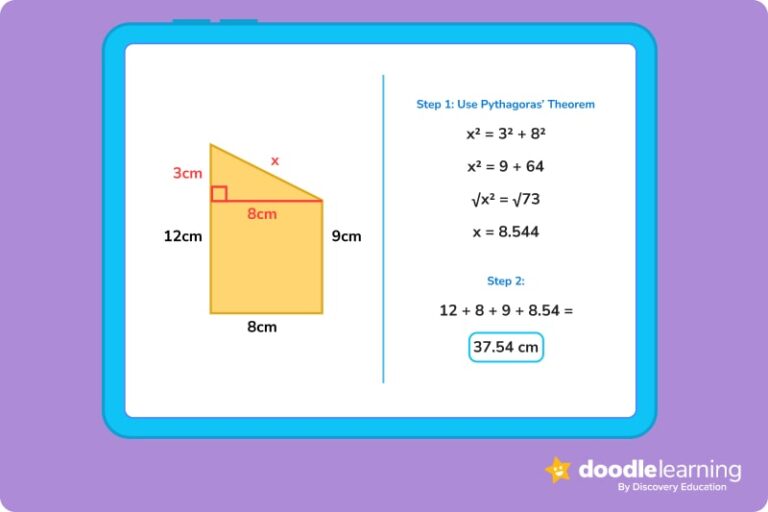
Step 1: Use Pythagoras’ Theorem
x² = 32 + 82
x² = 9 + 64
√x² = √73
x = 8.544
Step 2:
12 + 8 + 9 + 8.54 = 37.54 cm
DoodleMaths is an award-winning app that’s filled with thousands of questions and games exploring multiplication, division and more!
Designed by teachers, it creates each child a unique work programme tailored to their needs, doubling their progression with just 10 minutes of use a day.* Try it for free!

*Based on earning 24 stars a day in DoodleMaths. Read the full study here.

21. Suzie has a four-sided dice that is numbered from one to four. She has recorded the following probabilities:
The probability of rolling a 1 is 0.1
The probability of rolling a 4 is 0.3
There is an even chance of getting a 2 or 3.
How many 2s would Suzie expect to roll if she rolled the dice a total of 500 times?
Answer: 150
22. The probability of it raining tomorrow is 0.3. What’s the probability that it won’t rain tomorrow?
Answer:
1 − 0.3 = 0.7
23. A dice is rolled. What is the probability of rolling a number greater than 4?
Give your answer as a fraction.
Answer: ⅓
24. Nikita asked a selection of students if they liked art or English. The results are noted in the Venn diagram below.
How many students don’t like art?

Answer: 10
25. Joe conducts a survey to find out the shoe sizes of his Year 9 classmates.
The results are listed in the graph below.
a) Calculate the mean shoe size
b) Calculate the range of shoe sizes
c) Calculate the mode from this data set
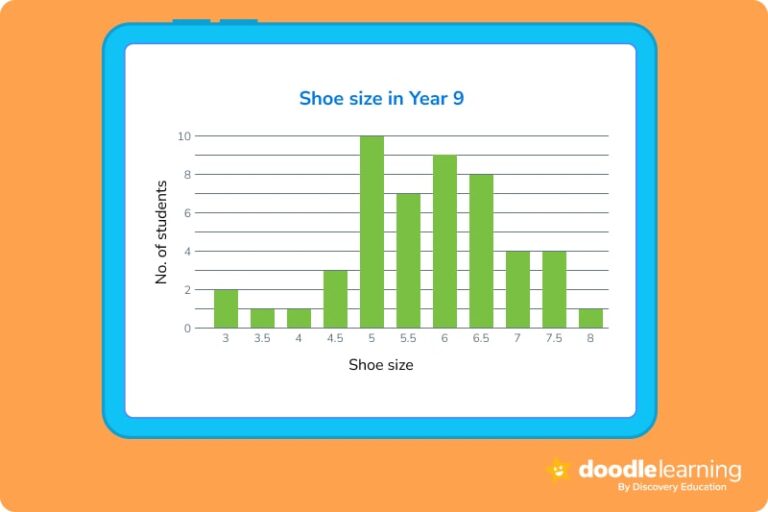
Answer:
a) 4.55 (rounded to the nearest two decimal places)
b) 5
c) 5
26. Use the following chart to answer the questions below:
a) Use the data to plot a scatter graph with “Test Score” on the y-axis and “Hours Studied” on the x-axis.
b) Describe the type of relationship you observe between the number of hours studied and the test scores.
c) Determine if there is a positive correlation between the two variables. Explain your reasoning.
d) If you were to draw a line of best fit, describe its general direction (slope) and what it would indicate about the relationship between hours studied and test scores.
Student | Hours studied | Test Score |
1 | 2 | 45 |
2 | 4 | 55 |
3 | 6 | 65 |
4 | 3 | 50 |
5 | 5 | 60 |
6 | 7 | 75 |
7 | 1 | 40 |
8 | 8 | 85 |
9 | 4 | 57 |
10 | 6 | 68 |
Answers: a)
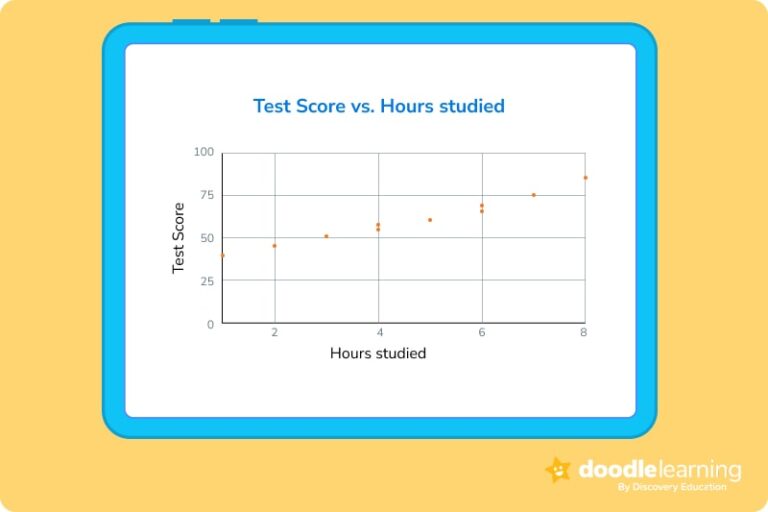
b) As the number of hours studies increases, so too do the test scores.
c) A positive correlation exists between the two variables (as one increases, so too does the other)
d) (see image below): This upward slope indicates that, generally, more hours studied are associated with higher test scores. The steepness of the slope shows the strength of this relationship.
If these Year 9 maths questions reveal any areas where your learner seems to be struggling, then be sure to take a look at our Doodle Learning maths app. The app has thousands of interactive maths games and activities that are fully aligned with the KS3 curriculum.
The maths questions Year 9 learners are assigned will be a part of a personalised programme to help them work on skills that’ll benefit them. So, even if they ace these questions, the app could still help them boost their academic performance!

Parents, sign up for a DoodleMaths subscription and see your child become a maths wizard!

Book a chat with our team
If you’d like to use Doodle’s browser version, please visit this page on a desktop.
To log in to Doodle on this device, you can do so through our apps. You can find out how to download them here: